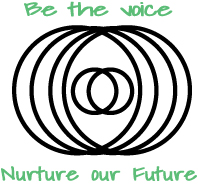What is Child Abuse?
Every year there are more than 3.6 million referrals of child abuse made to child protection agencies. A referral can include multiple children, leading to more than 6.6 million minors involved. The U.S. has one of the highest death rates involving, and on average 4-7 children are lost to child abuse and neglect daily. There are so many children out there suffering without the people around them noticing a thing. But we can help by educating ourselves and the people in our community to raise awareness.
Abuse is not just blotchy red marks and scars left on skin, it goes deeper. So what is child abuse? By definition, child abuse is when a parent or caregiver causes injury, emotional harm, death, or risk of serious harm to a child. There are several types of child abuse, such as neglect, physical, emotional, and sexual abuse. It’s important to be aware of the signs in order to help the children in your community possibly suffering under their parents care.
As to reasons why parents/caregivers abuse the children in their care? Well, mental illnesses such as depression can have a factor in it. Social and financial stress can cause adults to lash out at the children. Addiction and substance abuse increase chances of a child being abused. It interferes with the parents mental functioning, judgement, and self control and can lead to an inability to prioritize a child’s needs. And they may have been abused by their parents. 30% of abused adults will go on to repeat the cycle with their children. Usually it isn’t one, but multiple things factoring into the parents abuse.
Child abuse can result in physical and psychological developmental delays. It can stunt mental, physical, and emotional growth and have lasting effects into adulthood. Child abuse doesnt just end when they turn 18. It affects their ability to learn and function in society. Victims are more likely to develop mental illness, substance abuse, experience domestic abuse, and damaging relationships.
Physical abuse is any unwanted and intentional contact with your body. Examples are hitting, pushing, using weapons to cause intentional harm, choking, throwing, and grabbing in any violent way. Keep an eye out for frequent unexplained injuries, such as bruises, fractures, burns, cuts, scratches, etc.. Be cautious of injuries that do not match the explanation of how they came to be. Some signs of a physically abusive parent/caregiver can be poor explanation for a child’s injuries, displaying aggressive behavior towards their child, negatively speaking about their child, preventing medical care, and keeping their child away from social activities such as clubs, school, church, etc..
Sexual abuse is when a caretaker abuses their power to involve their child in sexual acts. This can also occur with an older or more powerful adolescent abusing the younger weaker child. 20.7% of adults report being sexually abused as a child. Studies show that 1 in 4 women and 1 in 6 men were sexually abused before the age of 18. Neglect is the failure of the child’s caretaker to provide adequate care for the child. Some examples of this type of maltreatment include failure to supply adequate food, accommodation, season-appropriate attire, supervision, medical and/or mental health services, or failure to provide sufficient emotional comfort. Supervision neglect is the most common form of child maltreatment and in 2014 alone, state agencies found over 702,000 child maltreatment victims.
What are some types of abusive parents?
The Inadequate Parent
These parents transform their children into ‘mini-adults’. Some parents reveal their innermost feelings and thoughts to their children, relying on them as a shield or crutch during difficult times.
The Controlling Parent
To control their children’s lives, they use shame, manipulation, and even over-helpfulness. They believe their children are incapable of doing anything and, as a result, they dictate and regulate their emotions, decisions, and even thoughts. They can use guilt, embarrassment, humiliation, and excessive lecturing to punish independent decision-making.
The Substance Abusers
Their addiction leaves them with little time or energy to devote to the demands of parenthood, and they often need the family to deny and ignore the issue. They are easily irritated, unpredictable, violent, and reclusive. They put blame on others and fail to take full responsibility for their problems.
The Verbal Abusers
These parents often make derogatory remarks about a child’s appearance, intellect, competence, or worth as a human. They demoralize their children by constantly criticizing them and draining them of their self-esteem.
Verbal violence can be divided into two categories:
Direct verbal abuse: freely, and viciously. They mark their children as dumb, ugly, and useless, among other things.
Indirect verbal abuse: Teasing sarcasm, offensive nicknames, and overt put-downs hide abuse behind humor.
The Physical Abusers
These parents, unable to control their own deep-seated anger, often blame their children for their own uncontrollable actions. “Infliction of physical injuries such as bruises, burns, welts, cuts, and bone and skull fractures” is how child abuse is described. Physical abusers are also considered as those who allow or permit violence, even if the parent’s omission is motivated by fear.
The Sexual Abusers
They are the greatest betrayers, destroying the very core of childhood – its innocence – whether they are blatantly sexual or covertly seductive.

